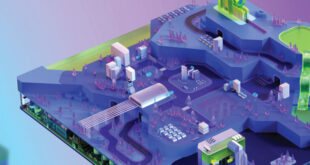Unity 3 is looking to be its creators biggest release to date – bringing with it source-level debugging, deferred rendering, best-in-class lightmapping and occlusion culling, and a unified editor.
With the launch nearly at hand, Thomas Grové asked members of the Unity team what features they are most excited about.
Roald Høyer-Hansen,
3D Artist
Beast lightmapping, no doubt. Never has lighting a scene been so much fun. Great interface and superb integration with Unity. It has actually changed the way I work, as I now do all my lightmapping/baking inside Unity, with Beast. I am sure 90 per cent of the games we’ll see after 3.0 will look 10 times as good as the ones seen today.
Charles Hinshaw,
Editor Developer
There are big features, but I’m really enjoying the little scene view tweaks that improve daily use. Vertex snapping, look-at rotation, live previews for materials, dragging prefabs into the scene live with ray-snapping, interactive light gizmos, and rect selection — get used to them and then use a 2.x build and see how frustrating it gets. Unity 3 is going to allow for scenes to be constructed much more quickly and accurately.
Aras Pranckevicius,
Code Chef
Personally, I’m quite happy with all the behind the scenes stuff that went into 3.0 rendering – surface shaders, seamless shader compilation into OpenGL ES shading language, the way we encode deferred lighting buffers and so on.
Obscure features that are awesome: XOR operator support in JavaScript. XOR is cool because:
* It’s exclusive – very exclusive.
* No short circuiting semantics with this guy.
* It appreciates differences in people, or at least in operands, which is almost the same as people.
* It has an X in it. Everything that has an X in it is cool. And this one starts with an X.
Samantha Kalman,
Senior QA Specialist
I’m most thrilled about the new audio features. Big things like FX filters and reverb zones to add atmosphere to your audio are really awesome, but little details like reliable synching of multiple playing sources are something I think are just
completely wonderful.
Combined with spectrum analysis you can do things like procedurally modify colours, meshes, lighting, or anything else based on audio playback.
Nicolaj Schweitz,
Test Specialist
I love the new audio features, especially the possibility to use audio to affect any runtime variable. I can’t wait to see what people get out of this. The mod tracker file support might start a new epoch in music for games — or should I say a revival of the demo scene trackers.
I am also amazed by the brilliant new physics features.
Cloth is a powerful feature that along with DSP effects and reverb zones will expand the way our users will present their game worlds.
I am really happy that we have managed to include a lot of details into the mix, audio preview in the scene, object selector, audio rolloff curves, UI for the player settings – I could very easily go on and on.
It soothes my perfectionist heart to see that many minor improvements in Unity.
Rune Skovbo Johansen,
Creative Programmer
A few things that are exciting to me, and haven’t been mentioned yet:
* New font back-end and text input with IME support should make Unity far more interesting to developers targeting Asia and other markets that have unique fonts.
* A few very typical basic math functions have been added that you’d need in many games, but which are not trivial for newbies to come up with on their own: MoveTowards (for floats and vectors) RotateTowards (for rotations and vectors), and others.
* Lots of small bug fixes all around that improve stability and performance.
* Full debugging capabilities
Joachim Ante,
CTO
I think Unity has made the transition to being a robust level editing tool — developers can place modeled objects from inside Unity as opposed to artists creating the whole level in maya/max. You could always use Unity in that way in theory, but there were some drawbacks why people didn’t do it workflow-wise and feature-wise when they were doing a high-end production.
There is a bunch of stuff that contributed to it, in order of importance:
1. Being able to lightmap from within Unity itself.
2. Static batching.
3. Being able to place things with the vertex snapping and raycast snapping.
4. Occlusion culling so you can get performance out of big scenes.
5. Being able to quickly find assets with the object picker.
6. Being able to search stuff in a super awesome looking way.
Equally important is the unified editor; we actually managed to get all platforms back under one tool again. This is awesome right now, but we also spent a lot of time making it easier to add new platforms, so that after 3.0 we can add new platforms at the speed of a rocket ship.

 MCV/DEVELOP News, events, research and jobs from the games industry
MCV/DEVELOP News, events, research and jobs from the games industry



